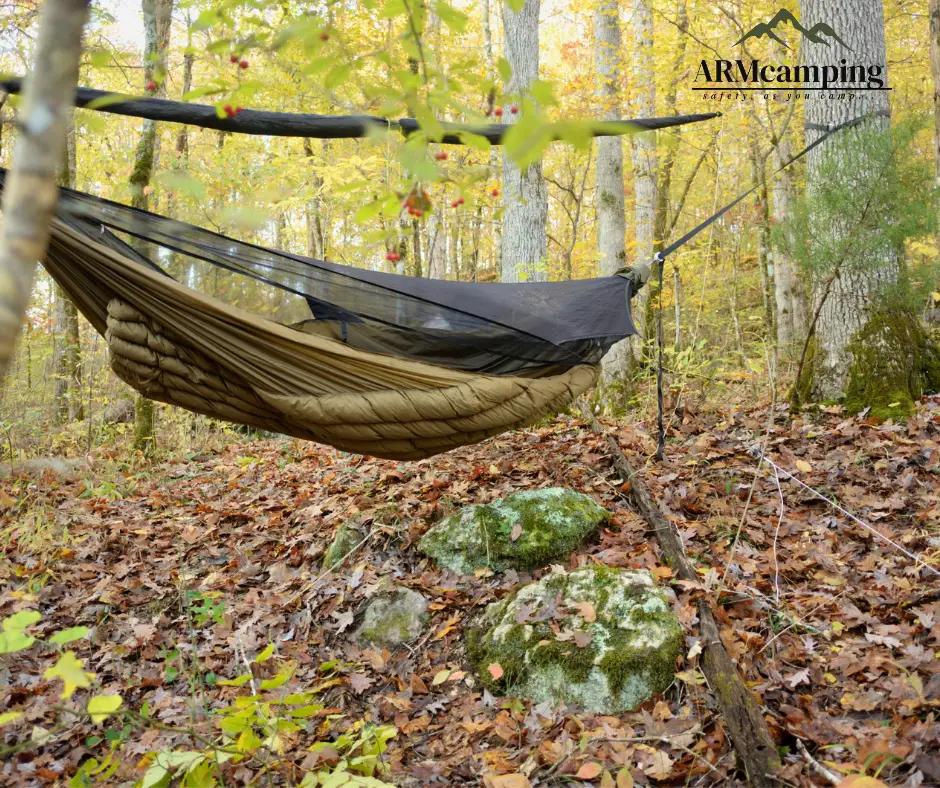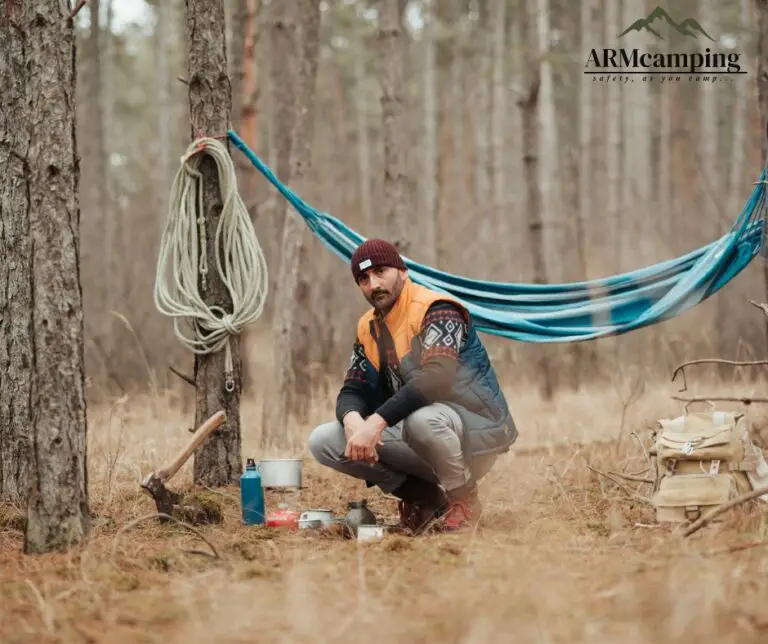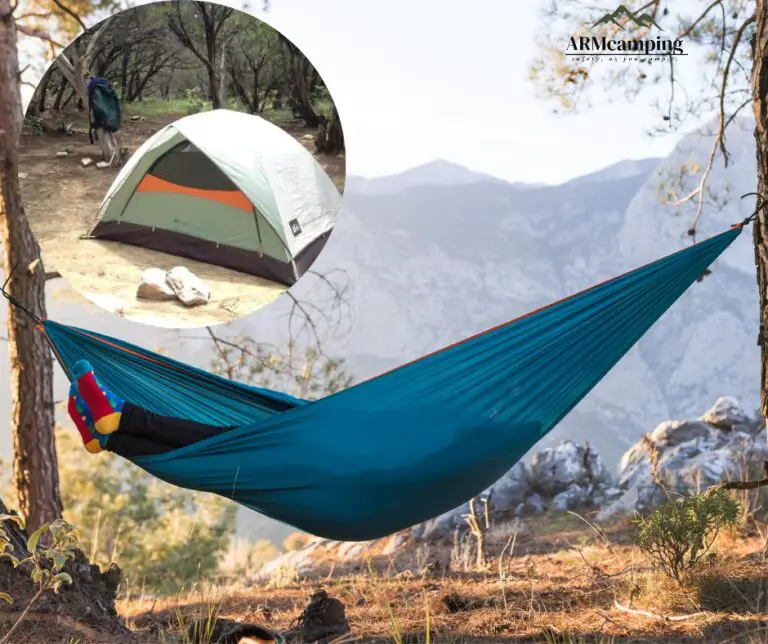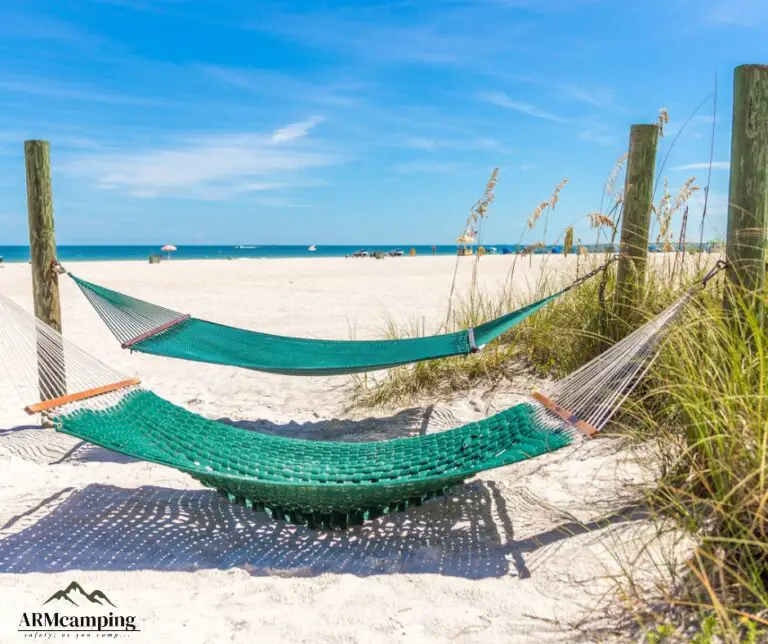
Whether it’s summer or fall, there are few things quite as enjoyable and relaxing as wild camping with a hammock under the stars. There’s a reason why the Appalachian Trail (or just simply the “AT”) is considered by many to be one of the greatest long-distance hiking trails in the world.
But one question that is rarely unheard of is; do you need a bug net for hammock camping Appalachian trail? Yes, you need a bug net for a hammock camping on the Appalachian Trail. Bug nets have become very popular in the hammock camping community.
They are lightweight and easy to use, and they provide an extra layer of protection from bugs, rain, and wind. Hammock campers love their bug nets because they allow them to easily sleep under the stars without having to worry about being eaten alive by mosquitoes.
What Is a Hammock?
Table of Contents
A hammock is a sling made of fabric, rope, or netting, suspended between two points that are typically used to swing, lounge, or sleep. It normally comprises one or more woven panels, or a woven fabric shell, that form a flexible pouch. We often saw the hammock as a symbol of summer, leisure, relaxation, and simple, easy living.
Hammocks were developed by native inhabitants of Central and South America for sleeping. Eventually, these designs made their way to North America, where they became popular in the summer months as relaxation.
They designed some hammocks to be hung indoors and outdoors; these usually have a wood frame with spreader bars at each end to prevent them from touching the ground when not in use.
Other types may have an open weave that allows air circulation but does not let dust and dirt enter; They are commonly used as beds for babies and small children because they are safer than cribs and playpens.
What Is the Appalachian Trail?
The Appalachian Trail is an approximately 2,184-mile-long hiking trail that runs from Georgia to Maine. It passes through 14 states and is maintained by volunteers from the Appalachian Trail Conservancy (ATC).
The trail passes through some of America’s most beautiful landscapes and offers hikers a chance to experience nature at its finest. It also provides opportunities for people to become more connected with their communities and the natural world around them.
The hike can be done in sections over time or in one trip if you have enough time. The entire journey will take about five months if you are walking at a pace of 15 miles per day on average.
You can begin the trail at either end if you want to go shorter distances or cover more ground than just one state at a time. You can also take buses or trains between sections if you prefer not to hike all the way through on foot.
Reasons You Need a Bug Net for the Hammock Camping Appalachian Trail
If you’re going to be hammock camping on the Appalachian Trail, you’re going to need a bug net. The bugs are relentless and can be pretty annoying. Here are some reasons why you need a bug net for the Appalachian Trail:
1. Bugs can ruin your trip
The bugs are everywhere. They’re in the trees, on the ground, and even in your mouth. If you don’t have a bug net, you’re going to have a hard time enjoying your hammock camping trip.
The more time you spend outside in the wilderness, the more time you’ll have to spend swatting at insects and trying to avoid them crawling into your mouth or ears.
There are plenty of other ways to protect yourself from bugs while hammock camping besides using a bug net. You can use insect repellent, put on long sleeves and pants, or even wear a head net if it gets really bad.
However, none of those things will stop all of those pesky bugs from bothering you every second of every day while out on the trail.
2. It protects your face and neck
Bug nets protect your face and neck from insects during sleep. Protecting your face will help prevent bites and keep you comfortable throughout the night. Your neck is also vulnerable to bites and can get very itchy after being attacked by mosquitos all night long.
3. It protects your gear
Bug nets protect your gear from getting soaked in condensation from your breath or sweat when it builds up inside of your hammocks when the humidity gets high outside, especially during warmer months like spring and summer. If this happens, then all of your gear will be soaked with water and could even freeze over if temperatures drop below freezing at night.
4. You don’t have to worry about getting tangled up in it
Netting material is typically made of lightweight nylon or polyester mesh that allows airflow through while keeping bugs out of your sleeping area. They designed these nets to be easy to set up with ropes and hooks that attach them directly to trees or poles along the campsite perimeter.
And because there aren’t any stakes involved (like there are with traditional tents), there’s no risk of tripping over tent stakes if you need to step outside for something during the night or early morning hours.
5. It’s easy to take off
No need to worry about taking off your sleeping bag or blankets when you want to go outside and enjoy the fresh air. Just flip open the netting and go.
6. It is lightweight
The first reason you need a bug net for your hammock camping Appalachian Trail trip is that it is lightweight, so it is easy to carry. You may go on a long journey, and this means that you will have to carry all of your belongings with you.
You do not want to add extra weight by bringing along an unnecessary item like a heavy-duty tent which would weigh down your pack.
You can easily attach the bug net to your hammock with Velcro straps, so it will not fly away during the night when you are asleep in the woods.
It also has mosquito netting that helps prevent those pesky bugs from biting you while you sleep. The mesh material keeps out other insects like bees and flies as well.
How to Set up a Bug Net for Hammock
Follow the steps below to set up your bug net for your hammock:
Step 1: With the hammock unrolled and laying on the ground, spread out the bug netting and drape it over the hammock. You may need to use some force to make sure that it’s spread out evenly across the entire hammock. If you want to cut down on weight, you can skip this step and put on the bug netting later.
Step 2: Now that you’ve got your bug netting set up over your hammock, you’ll want to stake it down so that it doesn’t move around in the wind or rain. The easiest way to do this is by using stakes at each corner of the netting, but if you don’t have any stakes on hand, you can use rocks instead. Just stick them into the ground at each corner of your netting so that they’re holding it down securely.
In Conclusion
As you can see, there are plenty of reasons to use a bug net for your hammock. So, set one up on your next camping trip.







